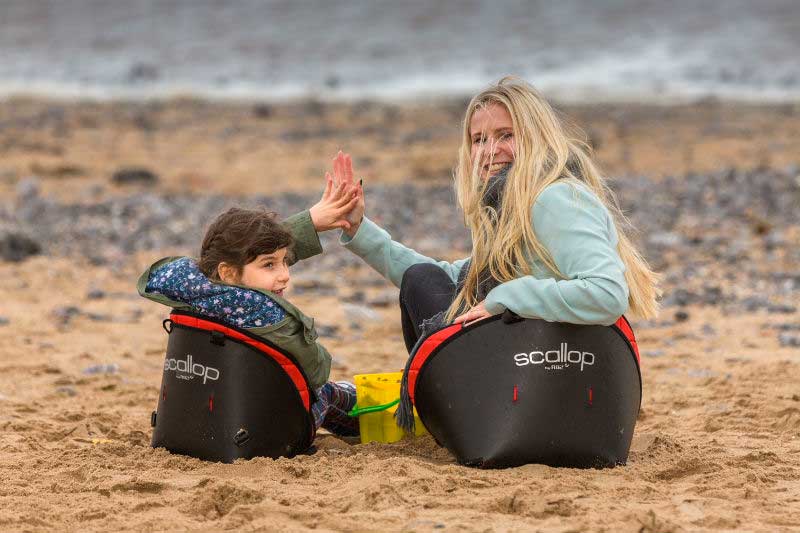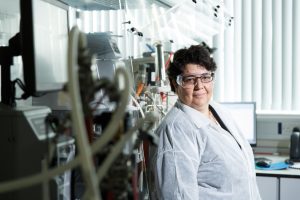A CHAIR created by UWTSD product design graduate Keira Gwynn, which helps a little girl and her family enjoy Christmas together, will be featured in the Cooper Hewitt, Smithsonian Design Museum’s access+ability exhibition.
The R82 Scallop chair has been selected for inclusion in the exhibition that will feature products, projects and services by and for people living with cognitive and sensory disabilities that expand their ability to lead independent lives and engage more fully in the world.
It was originally developed by Keira as a project during her degree course at UWTSD. Keira designed the R82 Scallop to aid children living with mild to moderate disabilities in floor sitting and to add extra support while sitting on a chair. “The R82 Scallop encourages long sitting or sitting with slightly bent knees, naturally preventing children from sitting in ‘W’ shape or in a slouching frog position which could be detrimental to health and posture,” said Keira.
The design caught the attention of R82 and Keira and R82 entered into a partnership in 2015 which resulted in her moving to the company’s base in Denmark to develop the product and bring it to market. Keira now works as a Project Leader in the company’s Marketing Department.
The chair helps eight-year-old Evie Hopkins (pictured), who was diagnosed with cerebral palsy, spastic quadriplegia at just four months old. It affects her right side and she is unable to sit independently without tipping over; which affects her confidence and caused anxiety.
It meant she missed out on family meal and play times with her brothers and sisters, trips to the beach and school friends’ birthday parties as well as family celebrations at Christmas.
But thanks to the product, Evie can now happily sit, eat and play alongside her parents, siblings and peers. Evie’s mum, Karen Hopkins said the introduction of the special seat has been life changing for Evie. “She is now able to actively participate in many activities which weren’t previously possible. It allows her to sit on a normal chair at the table and plays a variety of games with her brothers and sisters. It’s so lovely to see her finally doing that,” she said.
Keira said studying product design at UWTSD had taught her to gather research, analyse and use it creatively to solve real life problems. “These skills enabled me to create a product that not only solved a problem for one particular family’s needs but many,” she added. “I created an inclusive product that could be used by a variety of users from children with special needs to adults who just need a comfortable floor sitter.”
















Add Comment